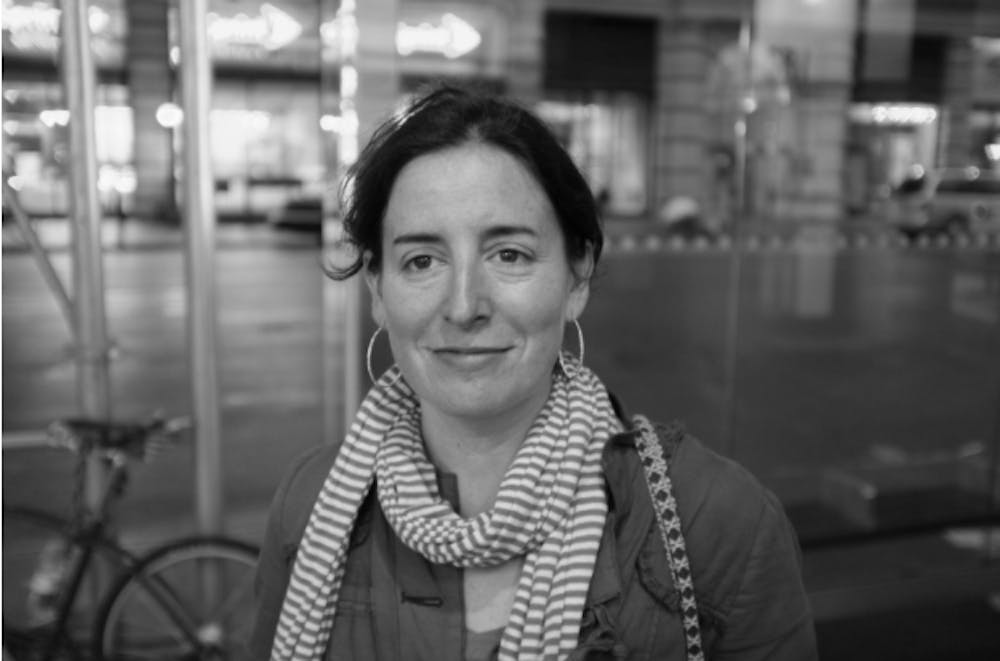By Richard Chachowski
Staff Writer
Over the years, author Aimee Bender has proven time and time again that she’s able to bridge the mundane with the surreal in her work. Her writing has shown clearly her creative abilities to explore the absurdities of the modern world, focusing especially on individuals’ relationships among family and friends.

An award-winning author, Bender is a professor of creative writing at USC, and has had her work appear in Granta, GQ Harper’s, McSweeney’s, and The Paris Review. Her novel, “An Invisible Sign of My Own,” appeared as one of the L.A. Times’s books of the year, and her short story collection, “The Girl in the Flammable Skirt” was named a New York Times Notable Book.
The Signal spoke with Aimee Bender in a conversation about her process, surrealism, as well as advice for aspiring writers.
You’d previously said that “The Particular Sadness of the Lemon Cake” was a “kind of retelling of a novel that hadn’t worked.” How do you know when a project — whether it’s a short story or a novel — just isn’t working at first as you’re writing it?
BENDER: That one took me a long, long time. I worked on that book for years! So it took me a while to see it wasn’t hanging together as a whole. But the main way I tell has to do with my own interest. If I’m still engaged, I’m willing to work on it. If I’m bored, not a good sign. So a lot, to me, is about my own relationship to the work. And, of course — I might be very bored one day and then re-engaged the next. That’s why a certain amount of regular work time is helpful for me — so that I can see what I actually feel like working on. But some things just never lose that sheen of boredom, and those things I let go. And that’s really the majority of stuff. I’m thinking of Austin Kleon’s wonderful book “Steal Like an Artist” — which really emphasizes this idea of going toward the work that is most compelling to you, specifically you.
What words of advice do you have for writers or students interested in employing the surreal in their work?
BENDER: There are the practical ones — keep a dream journal, try out writing exercises that stretch your sense of what can work in a story, note down a moment in each day that began to move into the surreal inside the dailiness of life. (“The Book of Surrealist Games” is a great resource here!) But mostly I think it’s just knowing it’s an option as you’re writing. What the surrealists did that I love so much is to dignify our dreams, our messy weird symbolic dreams, and let them be a resource; “The Poet is Working,” Andre Breton wrote in their manifesto, a sign hung on the door of a napping poet. And when we, as writers, let that be as real a resource as anything else, then in the moment, inside a sentence, on the page, you might make a move in the plot or even in the descriptions that allows for that world to enter, as it does in our lives all the time.
As a surrealist writer, do you ever worry the elements in your work may be going “too far,” thereby losing your reader as a result?
BENDER: I would look again at those stories when you backed off! I sometimes stop but then will peek back the next day, see if it seems to work. Often it doesn’t; sometimes it does. But mainly I don’t “pick” a surreal story — it either emerges, or it doesn’t. And which reader is your ideal reader? Matthew Salesses just visited USC and was talking about audience, about knowing who you’re writing for, who you might really want to write for. Are you writing for a reader who won’t take that leap? His latest novel is so surreal! And he uses that surrealism to probe complexities of race, identity, invisibility, and more, trusting that the right readers will come to the book.
As a writer who is known for their exciting stories where literally anything can happen, how do you recommend students overcome potential challenges when it comes to writing about the mundane in order to write stories that might be outside their norm?
BENDER: I think the truth is, the work decides itself somewhat — what shows up on the page, what is alive in the sentences — that’s the work to continue. And it may be about something directly from your life, and it may be wild and woolly. But if you follow the good writing, that will take you somewhere real. (By which I mean “real”/real.)
What’s the main lesson or takeaway that you hope a student walks away from your class with?
BENDER: Hopefully they notice more when their own work has an aliveness, and they’ll follow that, instead of coming to the page with an idea they feel they must make work, and letting go any side stories that may be actually more interesting. To play! To experiment!
Has parenthood changed how you write about children at all?
BENDER: It’s hard for me to tell; mainly, I’m surrounded by different and new nouns, stories, objects, and those seem to work their way in. When I was writing “The Butterfly Lampshade,” my daughter asked for a plastic beetle, and so we have a big brown plastic stag beetle she likes to play with sometimes. And that beetle enchanted me too, and I wrote about beetles in the book, and I’m sure it was partly from that. Maybe at some point I’ll write more directly about parenthood, but not yet.







